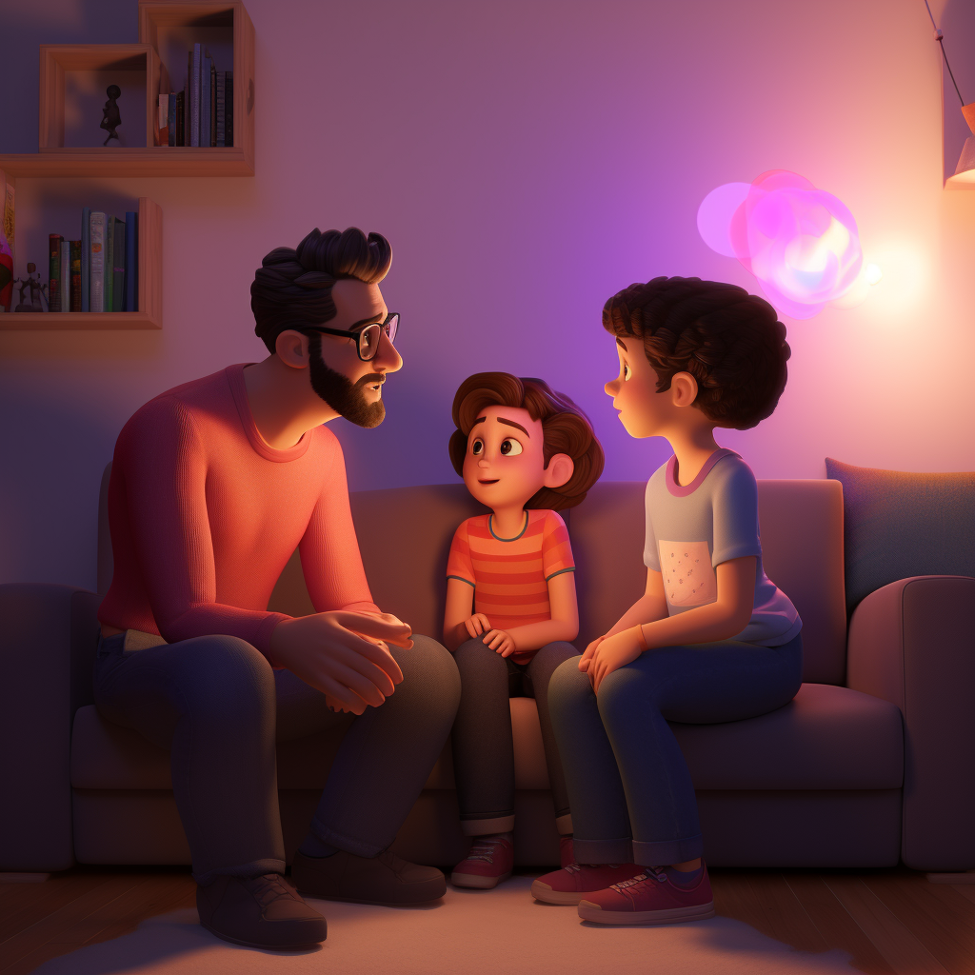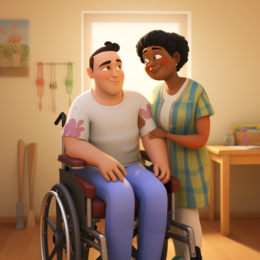How to Explain LGBTQ to a Child

We thought you might like these too:
- How Should You Refer to an LGBTQ Patient?
- LGBTQ+ Support: Rising Against the Tide of Anti-LGBTQ+ Laws
- Gay Life after 40
- States With the Most Protections for LGBTQ Youth
- Conversion therapy is harmful to LGBTQ people and costs society as a whole, study says
The world is beautifully diverse, filled with all colors, shapes, and identities. And just like we teach our children about the rainbow after a rainy day, it’s equally important to educate them about the beautiful spectrum of human identities. But how do we start talking about LGBTQ support to young minds? It’s simpler than you might think.
Let’s delve into Sarah’s journey. Sarah, a spirited single mother of an inquisitive 6-year-old named Max, grappled with the same question when Max asked her about a same-sex couple they had met at the park. Journey with us through Sarah’s approach and you might find the answers you’re seeking.
How to Explain LGBTQ to a Child
Explaining LGBTQ to a child is not just about definitions; it’s about fostering understanding, compassion, and acceptance. Children, with their natural curiosity, have a remarkable capacity to embrace diversity. In today’s evolving world, they are likely to encounter friends, family members, or even fictional characters who are part of the LGBTQ community.
By initiating these conversations early, you prepare them to navigate the world with an open heart. Think of it as planting a seed for a future garden of empathy. Begin with age-appropriate language, real-world examples, and most importantly, an open door policy – letting them know they can come to you with any questions, anytime.
This not only educates them but also strengthens your bond, making difficult subjects a bridge to deeper connection rather than a barrier. Remember, it’s not about one big conversation but an ongoing dialogue adapting to their growing understanding.
Educate Yourself about LGBTQ

Statistics:
- According to a 2020 survey, 5.6% of U.S. adults identify as LGBTQ, a number that is consistently rising as societal acceptance grows.
- Studies show that children exposed to diverse topics, including sexuality and identity, grow up to be more empathetic and open-minded adults.
Before diving into a conversation with your child, it’s essential to be knowledgeable. Seek reliable resources, join LGBTQ support groups, or attend community events. This prepares you to answer questions with clarity and confidence.
Explain Gender, Identity, and Sex to a Child
Children are curious beings, always eager to learn. Start with basics:
- Gender: It’s how you feel inside, whether you identify as a boy, girl, both, neither, or somewhere in between.
- Identity: It’s who you feel you truly are on the inside, regardless of how you look on the outside.
- Sex: It’s about our biological differences, like chromosomes and body parts.
As Sarah explained to Max, “Imagine everyone having their own special story. Some boys feel like boys, but some might feel like girls. And that’s okay.”
Quick Poll
Explore What LGBTQ Means
Using simple words and examples:
- Lesbian: A girl who likes another girl.
- Gay: A boy who likes another boy, or sometimes, it can also mean a girl liking another girl.
- Bisexual: Someone who can like both boys and girls.
- Transgender: People who feel their inner self doesn’t match their body and might choose to live as the gender they identify with.
- Queer/Questioning: A term people use when they’re still exploring their feelings or don’t want to label themselves.
Sarah told Max, “Remember your Lego sets? Just like you can build different things, people can have different feelings.”
Be Ready to Speak and Listen Without Judgment
Open dialogue is the foundation of understanding. When your child asks a question:
- Listen attentively.
- Provide honest answers.
- If unsure, it’s okay to say, “I don’t know, but let’s find out together.”
Max asked, “Why does Peter have two moms?” Sarah replied, “Every family is unique. What matters is love.”
Speak About Acceptance
Statistics:
- About 39% of LGBTQ adults faced rejection at some point in their lives due to their sexual orientation or gender identity.
- LGBTQ support can reduce the risk of mental health issues.
Sarah taught Max: “Just like we accept all flavors of ice cream, we should accept everyone. It’s love and kindness that counts.”
Discuss Bullying
Children need to know that bullying anyone, for any reason, is unacceptable. Teach them:
- It’s wrong to tease or harm someone because of who they are or who they love.
- Always stand up for what’s right and support friends who may be different.
“Remember how you feel when someone teases you for your red shoes? It’s the same when someone is teased for being different,” Sarah told Max.
Importance of Explaining LGBTQ to a Child
Creating an inclusive environment at a young age:
- Shapes empathetic adults.
- Challenges stereotypes and prejudices.
- Encourages unity and acceptance in diverse communities.
As Sarah realized, answering Max’s questions honestly laid the foundation for a future filled with compassion and understanding.
Conclusion
Explaining LGBTQ to a child is all about fostering understanding, acceptance, and love. Sarah’s journey in educating Max is one of countless tales out there. With patience, empathy, and open-mindedness, every parent can guide their child towards a future of acceptance and unity.
AFTER READING THIS ARTICLE, DO YOU FEEL BETTER EQUIPPED TO DISCUSS LGBTQ TOPICS WITH A CHILD? SHARE YOUR EXPERIENCES AND THOUGHTS IN THE COMMENTS.
References
- Newport, Frank. “In U.S., Estimate of LGBT Population Rises to 5.6% in 2020”. Gallup, 2020.
- “LGBTQ Mental Health and Stigma.” National LGBTQ Task Force, 2021.


